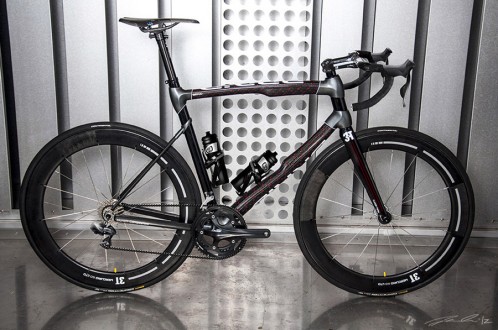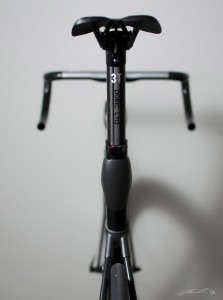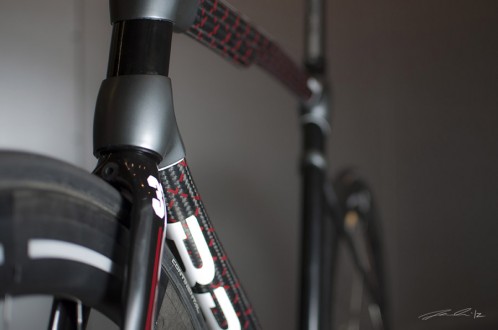 German Industrial designer Jacob Haim recently completed a new racing bike design as his final student project. His RaceBRAID bike was built in cooperation with Munich Composites GmbH, using the company’s innovative carbon braiding technology. The shaped braided top tube and down tube both feature visible red fiber textures… a signature feature of Braid bikes according to Jacob.
German Industrial designer Jacob Haim recently completed a new racing bike design as his final student project. His RaceBRAID bike was built in cooperation with Munich Composites GmbH, using the company’s innovative carbon braiding technology. The shaped braided top tube and down tube both feature visible red fiber textures… a signature feature of Braid bikes according to Jacob.
 His goal with the project was to challenge the way high-end composite bicycles are constructed today, and he went with a lugged construction that allows for a range of frames sizes (50cm to 60cm) using the same parts. Jacob points out a few of his reasons for the construction- “no material waste, low error rate, customized to the individual needs.” He also feels that it creates “a connection between high class engineering and the spirit of design.”
His goal with the project was to challenge the way high-end composite bicycles are constructed today, and he went with a lugged construction that allows for a range of frames sizes (50cm to 60cm) using the same parts. Jacob points out a few of his reasons for the construction- “no material waste, low error rate, customized to the individual needs.” He also feels that it creates “a connection between high class engineering and the spirit of design.”
He mentions that the frame could be manufactured by an automated process in Germany (similar to the way the BMC Impec is constructed I assume). The prototype frame weighs in at 900 grams making for a very light 5 kilogram complete build. Jacob does mention that weight of a production bike would vary though since the prototype is 80% hand crafted.
It is definitely an interesting student project. If you have any questions about it for Jacob, feel free to leave them in the comments.


Leave a Reply